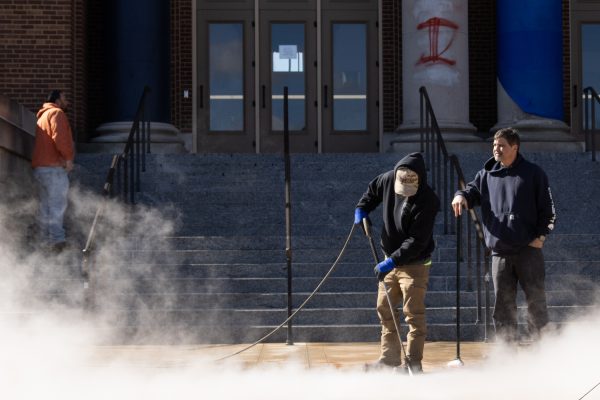Experts discuss earthquake
February 15, 2006
Experts in a variety of fields will meet to discuss “The Pakistan Earthquake: A Wake-Up Call for Mid-America?”
The experts will also take questions on the earthquake, the recovery progress, and what implications the earthquake might have on the U.S. Wednesday at 4 p.m. at the Levis Center, 919 W. Illinois St.
The Oct. 5 earthquake in Kashmir, Pakistan meets the qualifications of a mega catastrophe, but professors at the University want to focus not only on the original disaster, but also on the tragedy.
“Mega catastrophes are disasters that occur less than every 100 years and more than every 1000, and their damage can be mitigated,” said Susan Kieffer, moderator for the event and a professor in geology.
In the Pakistan earthquake 84,000 died, 100,000 were injured, and 28 million were displaced according to forum speaker Irfan Ahmad, Engineering professor and Pakistani native.
Get The Daily Illini in your inbox!
Ahmad said the original disaster was a tragedy by itself, but its effects are still unfolding. He plans to speak about the original earthquake, and also about those displaced by it and how they live. Ahmad said many of the people whose homes were destroyed in the earthquake live in tents incapable of protecting them from winter.
The earthquake could give information about a possible mid-American earthquake. The New Madrid fault line lies in the Missouri/Tennessee border and was responsible for several large-scale earthquakes in the 1800s, according to speaker Jerome Hajjar, Engineering professor and deputy director of the Mid-America Earthquake Center. Similar activity is predicted again, although when is uncertain.
The Mid-America Earthquake Center is dedicated to gathering information to aid policy-makers’ decisions about preparing for a large-scale earthquake in the area of the New Madrid Fault Line.
Hajjar said that there are differences between the two scenarios of the Pakistan earthquake and a U.S. earthquake. The soil, building codes and organization of the governments are very different. However, he said there are enough similarities that the center can learn from the earthquake.
Hajjar said very few buildings in America are prepared for an earthquake, and although building codes are somewhat better than Pakistan’s, they are still insufficient. In Memphis, Tenn., an area of extensive study for the center, 94 percent of buildings are non-seismically detailed wood frame structures. These buildings would be highly susceptible to damage in a large-scale earthquake.
The organization researches the possibility of an earthquake in America in unique ways. Satellite images of the Memphis area are put into computer programs that can estimate what structures are made of and what they are used for. This information can be combined with knowledge of soil composition to determine risk for a building.
Researchers can then put together priority listing for which buildings need to be reinforced. Government buildings are given higher priority, according to Hajjar.
Hajjar said that an earthquake is just the beginning of the disaster. The loss of life, schools, economic loss, and care facilities causes a great deal of damage after the catastrophe.





